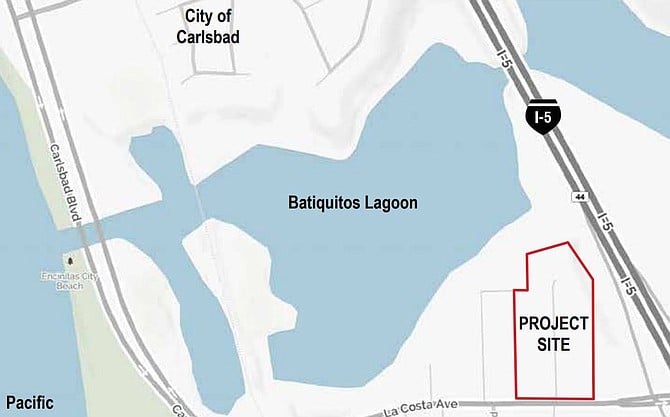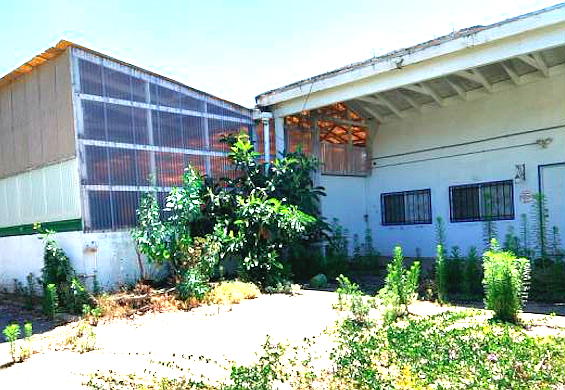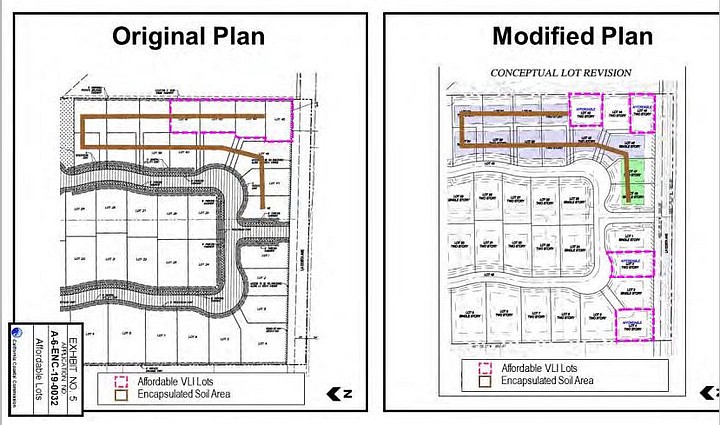 Facebook
Facebook
 X
X
 Instagram
Instagram
 TikTok
TikTok
 Youtube
Youtube

A 48-lot housing project perched over an impaired lagoon has survived an appeal to the Coastal Commission.
The "La Costa 48," to be built just west of I-5 along La Costa Ave in Encinitas, would yield 44 market-rate homes and four very low-income homes, likely managed by Habitat for Humanity.

According to the Batiquitos Lagoon Foundation, which unsuccessfully appealed the planning commission's approval of the project to the city council last year, there are several problems with the proposal.
Mainly, it threatens one of few remaining tidal wetlands on the southern California coast. The area is rich in wildlife, and it's rich, period. So little affordable housing has been built, the city is waiving standards for only four units as a density bonus project, opponents say.
"Houses in this area on a third of an acre are selling at nearly $2,000.000 without a water view," said Howard Krausz, chair of North County Advocates.
According to a staff report, mortgage and rents for households that qualify are based on a formula required by the state, depending on what the homeowner or renter can afford.

Under the soil are the highly toxic leftovers from 84 years of flower farming, including the banned pesticides DDT, dieldrin, and toxaphene. Water from the northern site drains into the lagoon. Once excavation and grading are underway, compounds could be further unleashed, opponents say.
The current application includes the demolition of old greenhouses, as well as grading and constructing public access trails and stormwater improvements to trap the pollutants. The foundation wants the soil moved offsite to a hazardous waste landfill.
While the applicant, David Meyer of DCM Properties Inc. (a consultant for the Weston Family), made several improvements, the soil will be remediated by encapsulation, according to the environmental impact report.
Burying and sealing toxic soil is a common method, and the process was approved by the regional water quality control board and the San Diego department of environmental health, which will oversee the final results.
But would anyone want to live on top of it? It was soon found out that the homes for the very low income would all be clustered in the southeast corner of the site, near the freeway and a gas station, and one of the homes would sit right over the burial site for the toxic waste.
According to the applicant, the layout was for the convenience of having them all together for better management.
In September 2019, the same year the coastal commission adopted its first environmental justice policy, the commission determined that the siting of the very low income homes wasn't fair, could deter affordable housing, and would have to be revised.
Since then, the very low income homes have shifted like Monopoly pieces, but not enough for the Batiquitos foundation..
"Three out of four of the very low income houses in this project remain concentrated at the southern edge along La Costa Ave." said the foundation's lawyer Arie Spangler.
Under new conditions the commission approved last month, two of the affordable units will be moved away from the roadway and spread into the community. Other conditions speed up the completion of public trails and connection with the I-5 bikeway.
Ongoing soil testing was debated, but will only continue through the mitigation period unless contaminants remain.
As the foundation sees it, there's no certainty about what will ultimately be built. DCM Properties indicated they will sell the project to a developer in the future, who could proceed with the current plan, or start over.


A 48-lot housing project perched over an impaired lagoon has survived an appeal to the Coastal Commission.
The "La Costa 48," to be built just west of I-5 along La Costa Ave in Encinitas, would yield 44 market-rate homes and four very low-income homes, likely managed by Habitat for Humanity.

According to the Batiquitos Lagoon Foundation, which unsuccessfully appealed the planning commission's approval of the project to the city council last year, there are several problems with the proposal.
Mainly, it threatens one of few remaining tidal wetlands on the southern California coast. The area is rich in wildlife, and it's rich, period. So little affordable housing has been built, the city is waiving standards for only four units as a density bonus project, opponents say.
"Houses in this area on a third of an acre are selling at nearly $2,000.000 without a water view," said Howard Krausz, chair of North County Advocates.
According to a staff report, mortgage and rents for households that qualify are based on a formula required by the state, depending on what the homeowner or renter can afford.

Under the soil are the highly toxic leftovers from 84 years of flower farming, including the banned pesticides DDT, dieldrin, and toxaphene. Water from the northern site drains into the lagoon. Once excavation and grading are underway, compounds could be further unleashed, opponents say.
The current application includes the demolition of old greenhouses, as well as grading and constructing public access trails and stormwater improvements to trap the pollutants. The foundation wants the soil moved offsite to a hazardous waste landfill.
While the applicant, David Meyer of DCM Properties Inc. (a consultant for the Weston Family), made several improvements, the soil will be remediated by encapsulation, according to the environmental impact report.
Burying and sealing toxic soil is a common method, and the process was approved by the regional water quality control board and the San Diego department of environmental health, which will oversee the final results.
But would anyone want to live on top of it? It was soon found out that the homes for the very low income would all be clustered in the southeast corner of the site, near the freeway and a gas station, and one of the homes would sit right over the burial site for the toxic waste.
According to the applicant, the layout was for the convenience of having them all together for better management.
In September 2019, the same year the coastal commission adopted its first environmental justice policy, the commission determined that the siting of the very low income homes wasn't fair, could deter affordable housing, and would have to be revised.
Since then, the very low income homes have shifted like Monopoly pieces, but not enough for the Batiquitos foundation..
"Three out of four of the very low income houses in this project remain concentrated at the southern edge along La Costa Ave." said the foundation's lawyer Arie Spangler.
Under new conditions the commission approved last month, two of the affordable units will be moved away from the roadway and spread into the community. Other conditions speed up the completion of public trails and connection with the I-5 bikeway.
Ongoing soil testing was debated, but will only continue through the mitigation period unless contaminants remain.
As the foundation sees it, there's no certainty about what will ultimately be built. DCM Properties indicated they will sell the project to a developer in the future, who could proceed with the current plan, or start over.
Comments